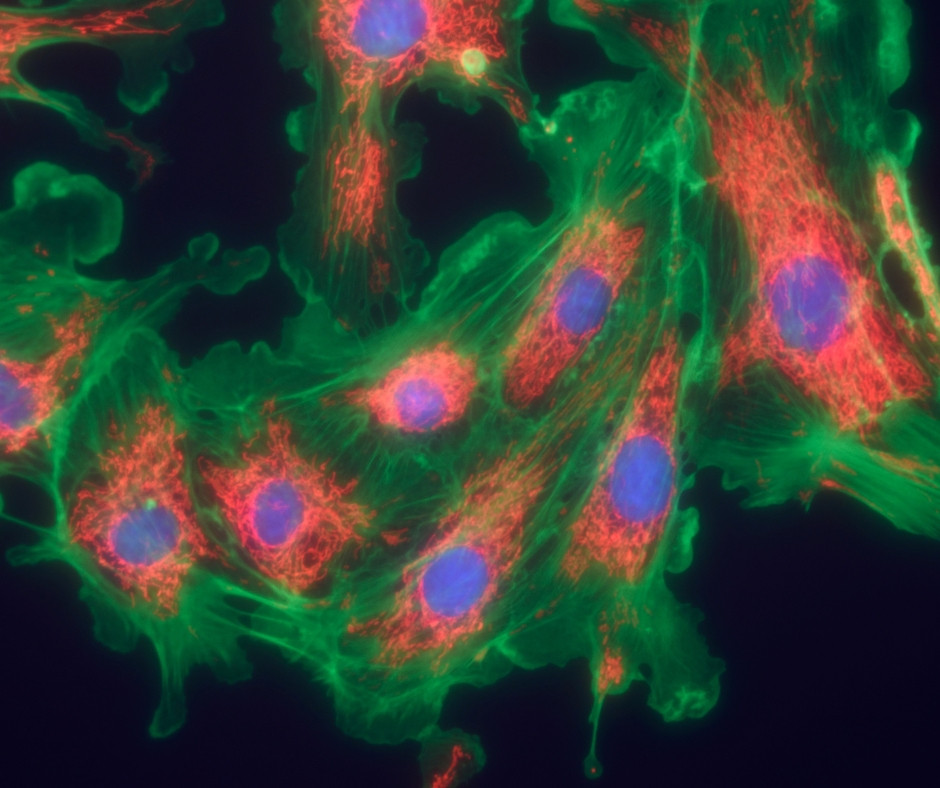
Advances in the comprehension of the physiological basis of collagen VI-related muscular dystrophy

A new study published in Scientific Reports and led by Dr Cecilia Jiménez (IRSJD-CIBERER) provides, for the first time, a comprehensive analysis of the proteins (proteome) contained in the extracellular vesicles of fibroblasts from patients with collagen VI-associated muscular dystrophy (COL6-RD). Their secretome, which represents the set of proteins secreted by these cells into the extracellular space, was also analysed.
Extracellular vesicles, small structures released by cells containing proteins, lipids, and nucleic acids, play a crucial role in cellular communication, and their analysis can provide valuable insights into the state of cells. There are indications that in COL6-RD, communication between fibroblasts is altered. For this reason, Dr Jiménez's team is exploring this research line.
The study compared the protein content of fibroblast vesicles and secretome of patients with COL6-RD and healthy individuals. This will help identify new biomarkers related to the disease and provide a more detailed description of the affected fibroblasts. As explained by Carmen Badosa, the first author of the article and a researcher at IRSJD, "Certain proteins associated with vesicle transport, actin cytoskeleton remodelling, cellular hemostasis (preventing blood loss), and oxidative stress were identified in the extracellular vesicles of patients, suggesting that these proteins could be involved in the pathogenesis of the disease."
This work enhances our understanding of the role of extracellular vesicles in the pathogenesis of COL6-RD. Patients with this condition experience challenges in tissue regeneration and wound healing in various connective tissues, which may be related to observations made regarding cell movement and communication. These findings open up new opportunities for obtaining more precise diagnoses and treatments for this neuromuscular disease.
